A scalloped tongue is a sign of nutrient deficiency
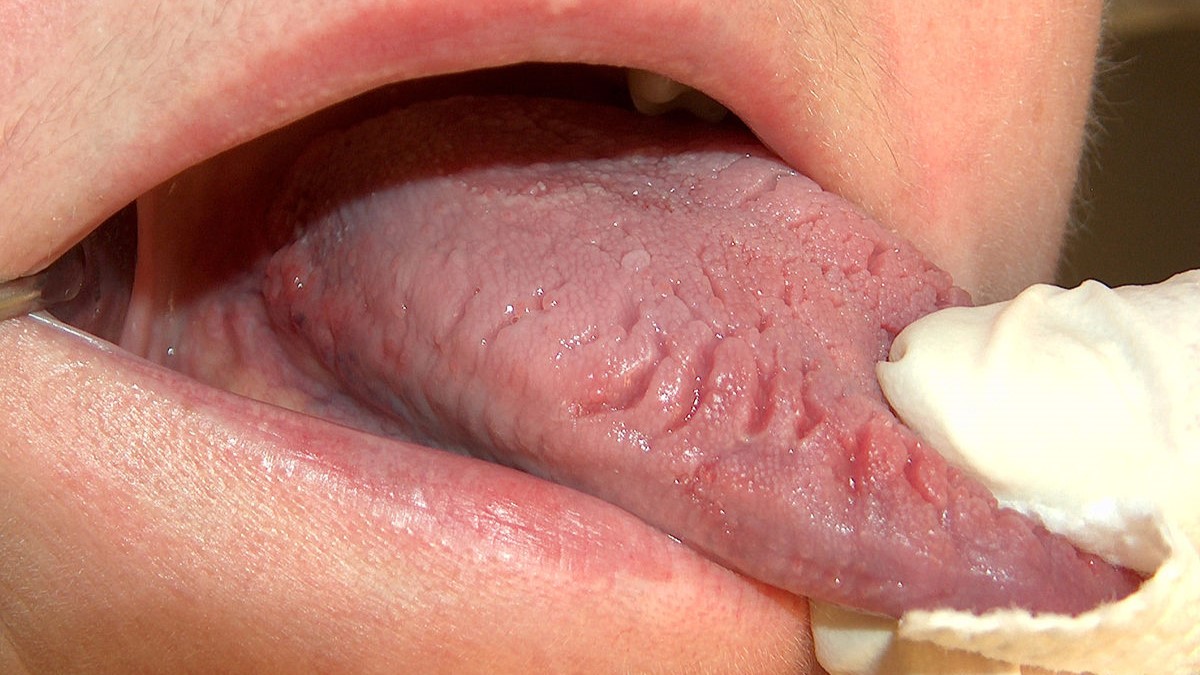
A tongue showing scalloped edges, puffiness, or teeth imprints can suggest potential nutrient malabsorption issues. These indentations may result from an enlarged tongue pressing against the teeth due to underlying nutritional deficiencies. Addressing this concern involves treating the specific deficiencies via dietary adjustments and supplements,
A vibrant red tongue could indicate you have a hormone imbalance
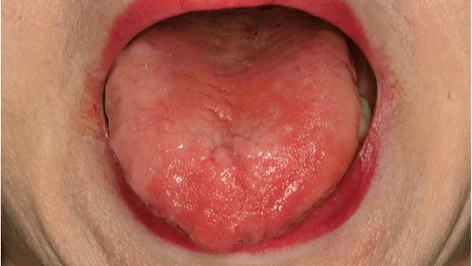
A vibrant red coloured tongue can be a sign of elevated body heat, possibly indicating a fever or hormonal imbalance. To address this issue, it’s crucial to identify the underlying cause. For fevers: rest, hydration, and over-the-counter remedies can help. Hormonal imbalances, such as lack of B-12 or folic acid often require medical assessment and treatment.
A purple tongue may be letting you know you have an infection

A reddish-purple tongue can signify inflammation or an underlying infection within the body. To mitigate this concern, it’s crucial to identify the source of inflammation or infection. Treatment options may involve addressing the root cause with antibiotics or anti-inflammatories, coupled with proper rest and hydration to support the body’s natural healing processes.
A thick white coating could signal a yeast infection
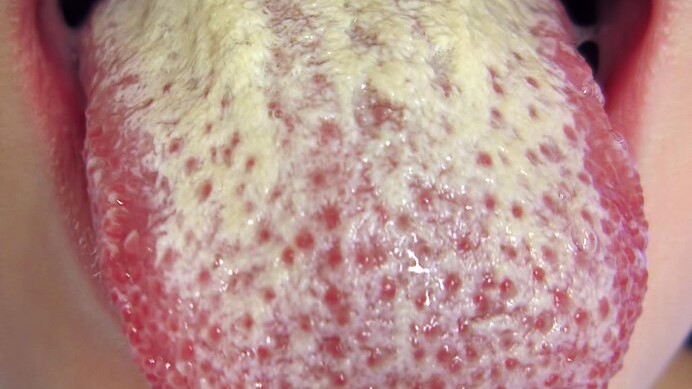
A thick white coating on the tongue can signal poor circulation to the extremities or potentially a yeast infection. This coating can hinder taste sensation and suggest underlying health issues. Enhancing circulation may involve lifestyle adjustments and physical activity, whereas treating a yeast infection often involves antifungal medications.
Tongue ulcers could be a sign you’re stressed, or pregnant
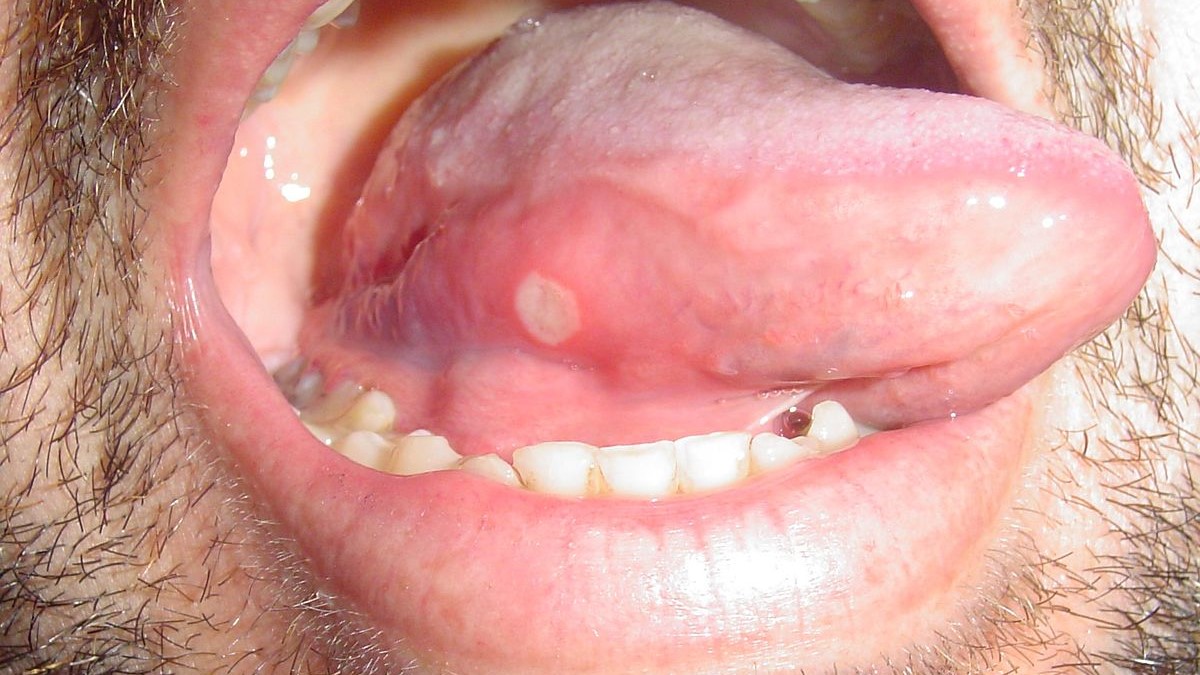
Tongue ulcers, also known as canker sores, may arise from various factors such as accidental tongue biting or irritation from a toothbrush. Pregnancy and certain medications can also trigger these ulcers, while psychological factors like stress, fatigue, and anxiety can contribute as well. A 2019 Nature Communications study established a notable association between mouth ulcers and depressive symptoms.
Having black, hairy tongue is a sign of poor oral management
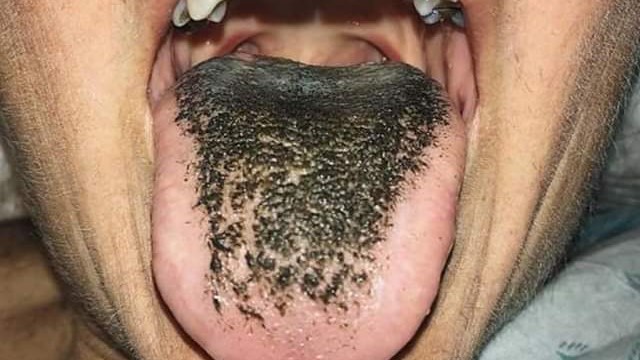
A black, hairy-looking tongue typically results from the accumulation of dead skin cells on the papillae, which can trap bacteria and food particles. Causes include inadequate oral hygiene, smoking, dry mouth, or a diet dominated by soft foods. Combat this by adopting a regimen of tongue cleaning, flossing, and consuming a balanced diet.
A numb or tingling tongue could signal a stroke
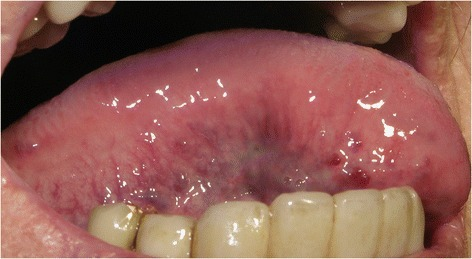
Tongue numbness or tingling can potentially indicate a stroke or transient ischemic attack (TIA), colloquially referred to as a ministroke. While TIA symptoms can be brief, they are still concerning, and both TIA and strokes are medical emergencies. If you suspect a TIA or stroke, it’s crucial to contact emergency services for immediate attention and care.
A prolonged tongue spasm could be a sign of lingual dystonia

Occasional muscle spasms are typical and can occur in any muscle due to factors like fatigue, dehydration, or electrolyte imbalances. Yet, frequent or severe tongue spasms may signal lingual dystonia, a chronic condition causing involuntary tongue movements. This disorder can lead to cramping, speech difficulties, and even choking.
Strawberry tongue is a sign of Scarlet fever
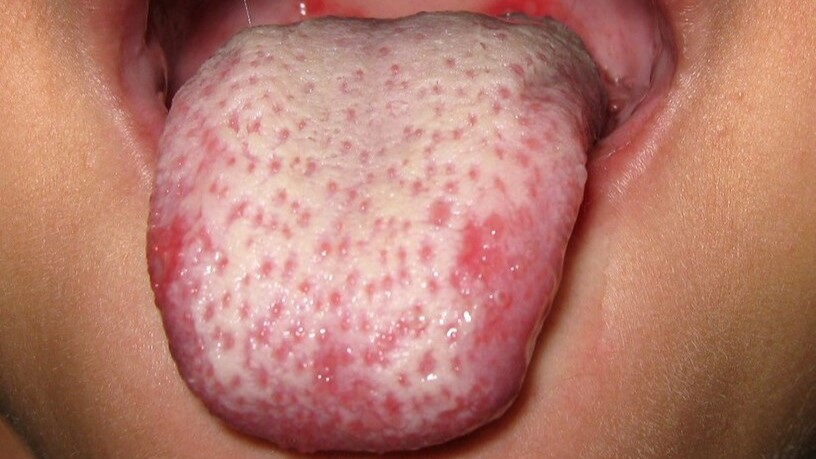
Scarlet fever, often associated with strep throat, is a serious illness demanding immediate attention. It can cause the tongue to develop a distinctive appearance resembling the surface of a strawberry. This characteristic sign serves as a visual indicator of the infection’s severity, as it’s usually the first symptom of the illness to appear.
Though rare, a yellow tongue can be a sign of jaundice
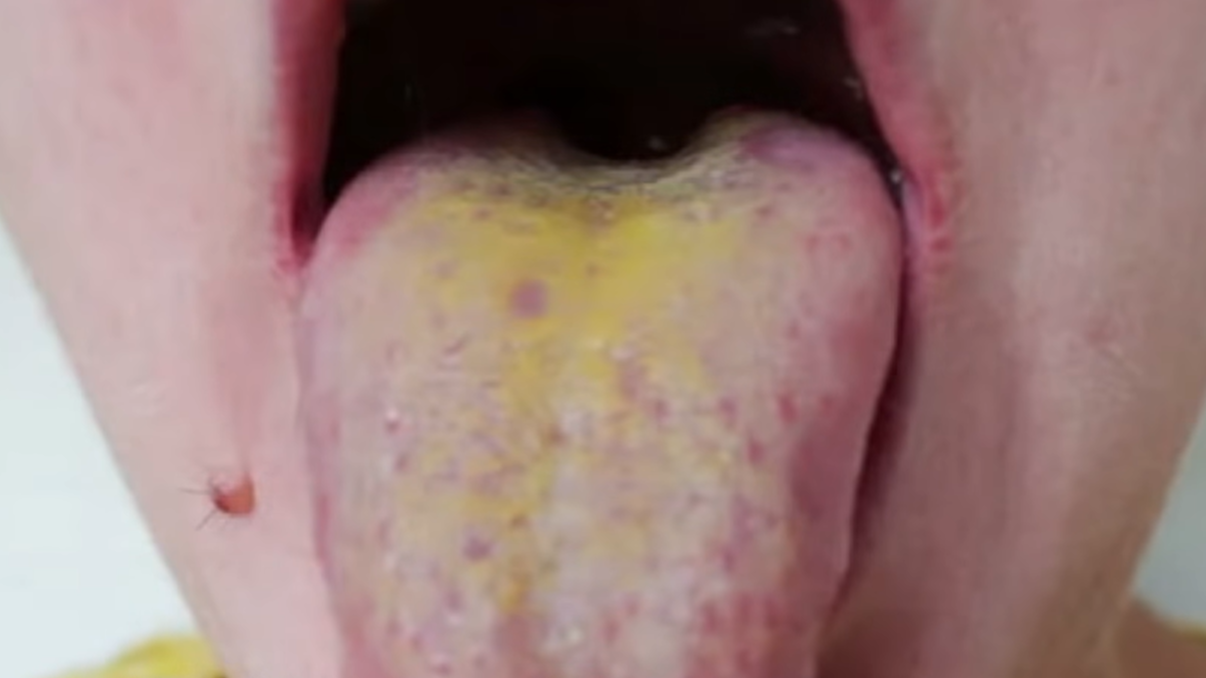
Yellow tongue discolouration is often attributed to bacterial overgrowth. Additional factors contributing to a yellow tongue include smoking, chewing tobacco, specific vitamin intake, psoriasis, or in rare cases, jaundice. Identifying the underlying cause is essential to determine the appropriate course of action for maintaining oral and overall health.
Gum disease can leave a bad taste
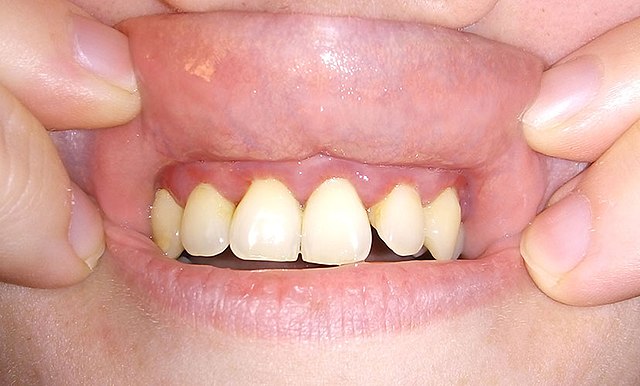
Gum disease is a condition that causes your gums to become swollen and sore, and even start bleeding, especially when you brush. But one lesser-known symptom of this common condition – also known as periodontitis – is a bad taste on your tongue. You may also experience bad breath.
A swollen tongue can be caused by allergies
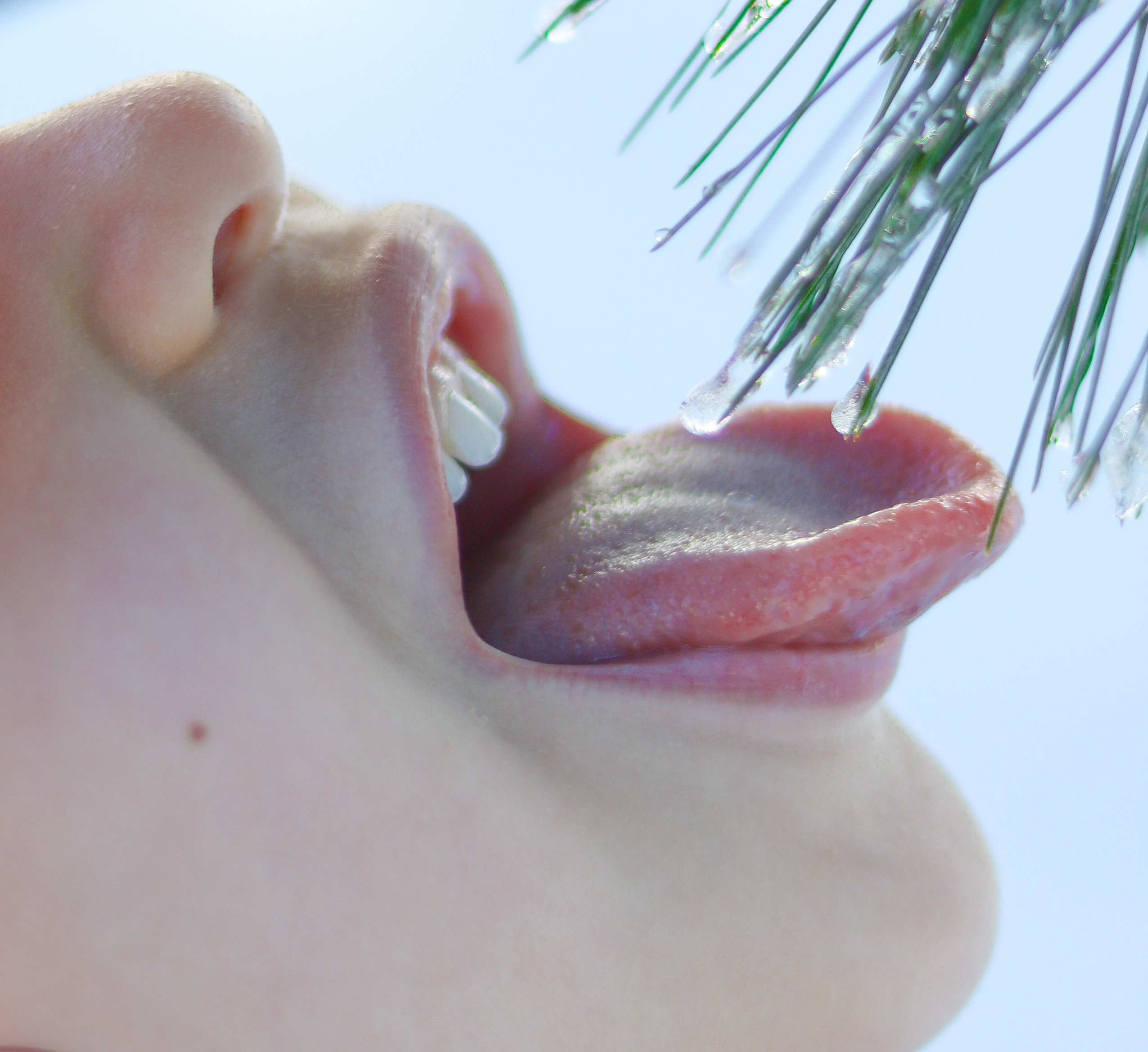
Anaphylaxis occurs when you have a very rapid and extreme allergic reaction, usually minutes after you come into contact with the allergen. One famous signifier of anaphylaxis is a swollen tongue, which may constrict your airways and make it difficult to talk. If someone shows signs of anaphylaxis, you should call the emergency services immediately, and use their EpiPen as directed.
Taste impairment can be a symptom of Parkinson’s
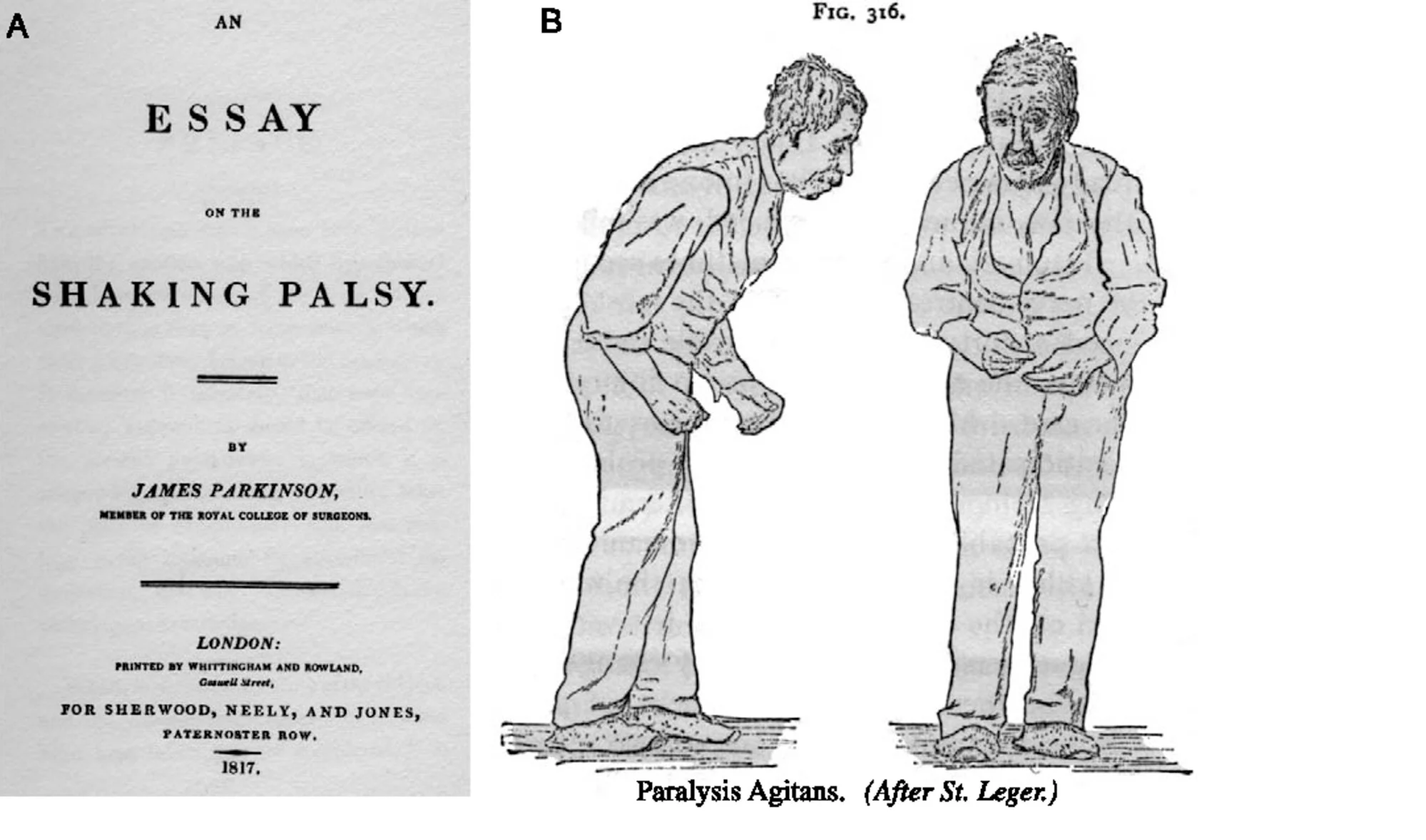
Parkinson’s disease is a serious, chronic, degenerative disorder, where nerve cells in the part of the brain that control movement begin to die. Some symptoms are easier to spot than others, such as difficulty with walking, slowness and tremors. However, there is another, more subtle change: ageusia, which means a loss of taste.
Diabetes can lead to a sweet taste

Diabetes is a disease that affects your body’s ability to make or use insulin, a hormone that affects your blood sugar levels. One warning sign of high blood sugar in diabetics is a sweet taste in the mouth. Other symptoms include needing to urinate more often and suffering from blurry vision or exhaustion.
Dementia can cause a change in taste

People who are suffering from dementia may experience drastic changes in the kinds of foods they like and dislike. There’s evidence to show that changes in your sense of smell, which also affect taste, can be a symptom that appears months or years before better-known symptoms like memory loss.
Loss of taste is linked to Multiple sclerosis

Like Parkinson’s Disease, Multiple sclerosis (MS) can cause dysguesia or changes in taste. All foods can start to taste similar due to the disorder, with sweet and sour eventually tasting the same. According to the National Multiple Sclerosis Society, about one-quarter of MS patients suffer from dysgeusia.
An oversized tongue is called macroglossia
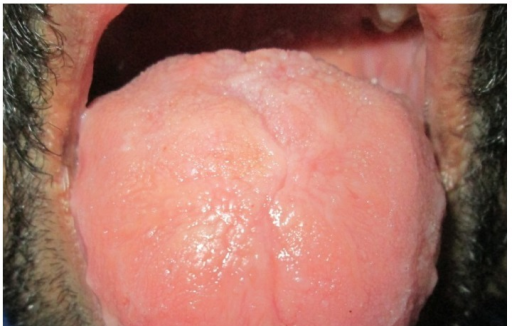
Macroglossia is an enlarged tongue, an unusual symptom that is more likely to affect children then adults. It can cause issues such as drooling, sleep apnea and speech problems. There are both congenital and acquired disorders that can cause macroglossia, including Beckwith-Wiedemann syndrome and Amyloidosis.
A metallic flavour can signal sinus problems

The common cold, allergies and upper respiratory infections can all trigger sinus problems. These air-filled sections of the skull are closely linked to both the sense of smell and taste and, as a result, one side effect of a sinus issue can be a strong metallic taste in your mouth. This should subside once any infection clears up.
A tingly tongue could have nerve damage

Visiting the dentist is an essential part of oral healthcare, but in rare circumstances, you can leave your appointment with a strange new symptom: a tingling sensation on the tongue. This might mean that damage to a nerve or blood vessel has occurred as a result of an injection such as a numbing agent. Any tingling should dissipate within a few weeks.
A lacy white pattern could be a sign of lichen planus
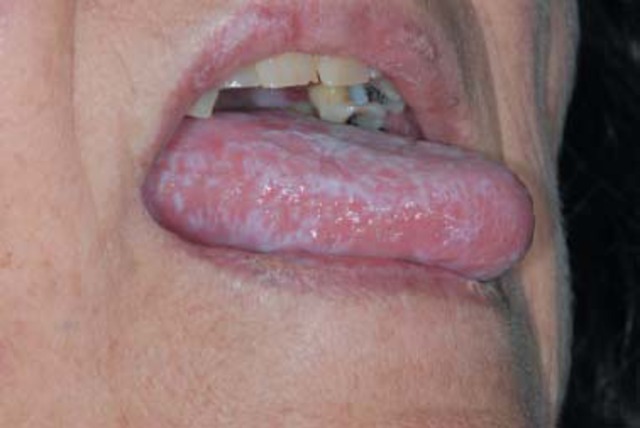
Despite its name, lichen planus isn’t any kind of living plant or pathogen. Instead, it is a rash that can spread over the arms, legs, torso, and even into your mouth – appearing on the tongue, gums and insides of your cheeks. It is not contagious, and it can be treated with GP-prescribed creams, ointments and mouthwashes.
A strawberry red tongue is a symptom of Kawasaki disease
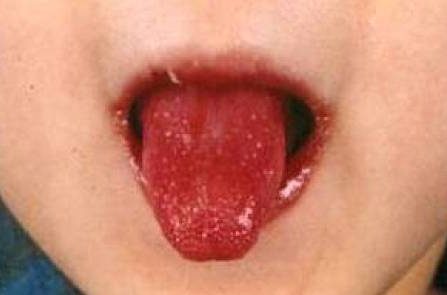
No one is quite sure what causes Kawasaki disease, and no bacterial or viral cause has ever been found. However, the symptoms typically include a red-purple rash, white patches in the mouth, and a bright red or ‘strawberry’ tongue. This disease affects children only, and babies under the age of one can experience more serious symptoms. Patients often require hospitalisation to be treated.
A sore tongue may mean you are anaemic
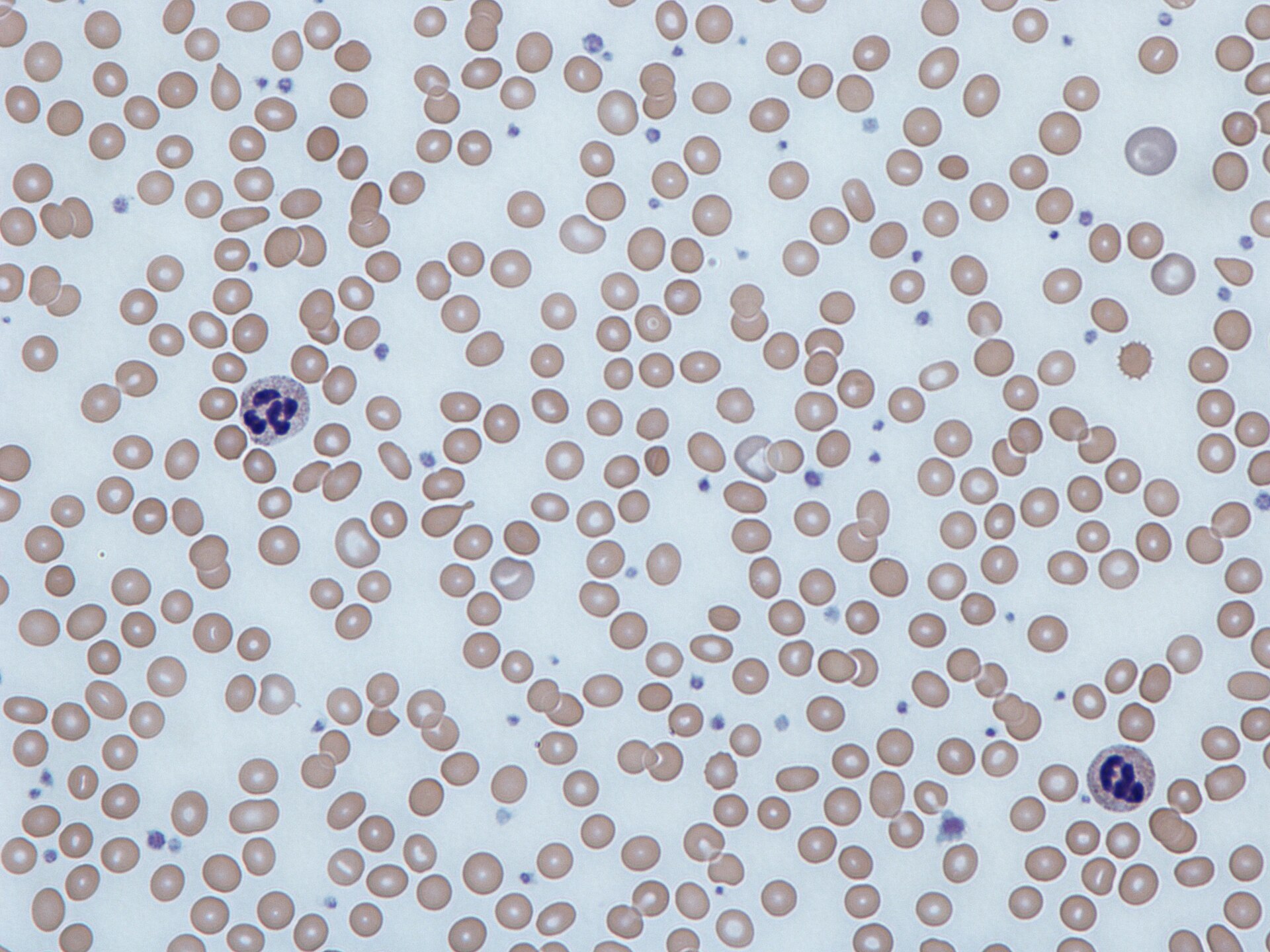
If your tongue is feeling tender and sore and with no obvious cause, you may be suffering from anaemia. When your iron levels are low, your tongue may become inflamed, causing discomfort and problems with eating and talking. Low iron levels trigger this because they affect energy supply to all the body’s muscles, including the tongue.
Purple swellings may be caused by caviar tongue
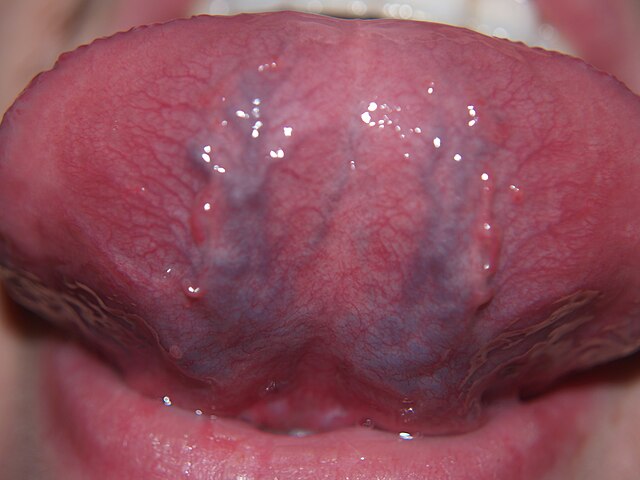
Caviar tongue is a condition where the veins on the underside of your tongue become swollen and bright purple. This issue is also called lingual varicosities. It is more common in old age, as the veins all over the body start to lose their elasticity. Although it may look painful, caviar tongue is actually a benign and harmless condition.
Tongue ulcers in babies can be a sign of Riga–Fede disease
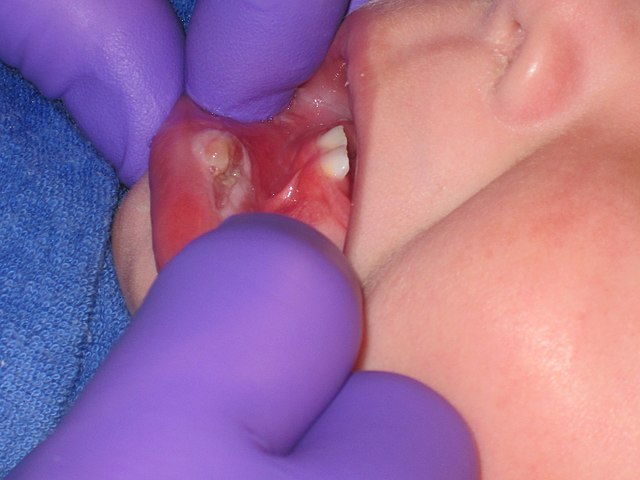
Ulcers often occur in babies who are experiencing toothing, but in extremely rare cases, the infant’s ulcers can turn into Riga-Fede disease. This syndrome is a type of traumatic ulceration and can lead to a large benign tumour. Riga-Fede disease can be uncomfortable for the child, but it is generally harmless.
Ludwig’s angina raises your tongue

Triggered by bacteria growing in the mouth, Ludwig’s angina is an unpleasant disorder that leads to cellulitis over the mouth’s floor. Swelling and difficulty in swallowing may follow, and it can cause the sides of the tongue to harden, pushing the tongue into an uncomfortable raised position. Ludwig’s angina can appear in just a few hours, and the most important part of treatment is to resume normal airway function.
If the base of your tongue hurts, it could be Eagle syndrome
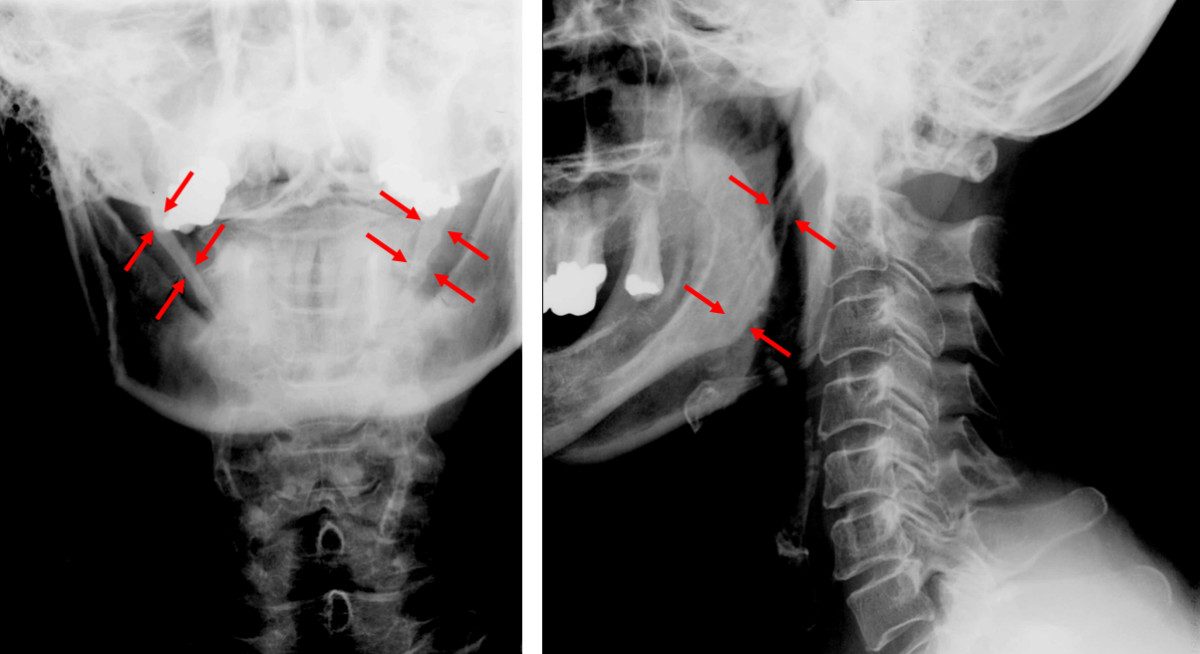
Eagle’s syndrome is caused by a misshapen bone in your skull that triggers neck and throat pain. Patients can suffer from a ringing sensation in their ears, and it can also cause pain at the very base of the tongue. Most common in people aged between 30 and 50, Eagle’s syndrome is usually treated with surgery.
Trouble with swallowing is known as dysphagia

The tongue plays a very important role in eating: it helps to crush food in the mouth and direct it down the throat. If you develop problems with swallowing – termed dysphagia in clinical settings – it may be the result of a problem with your tongue. When treated for dysphagia, you may be given a set of swallowing exercises that target the tongue.
A dry mouth might be a warning sign of thyroid disease

The thyroid is a gland that secretes hormones directly into the blood. Thyroid problems can affect the levels of various hormones in your bloodstream, including ones that control salivation. As a result, untreated thyroid disorders can leave you with a very dry mouth, because your salivary gland isn’t operating as usual.
Sleep apnea can make your tongue misshapen

One under-discussed symptom of sleep apnea is a misshapen tongue. Sleep apnea is a condition where you periodically stop breathing as you sleep. Without knowing it, you may respond to sleep apnea by pressing your tongue down into your teeth, in an attempt to open your airways again. This motion creates the classic curling edge seen on scalloped tongues.
Fluid-filled lumps are a sign of herpes
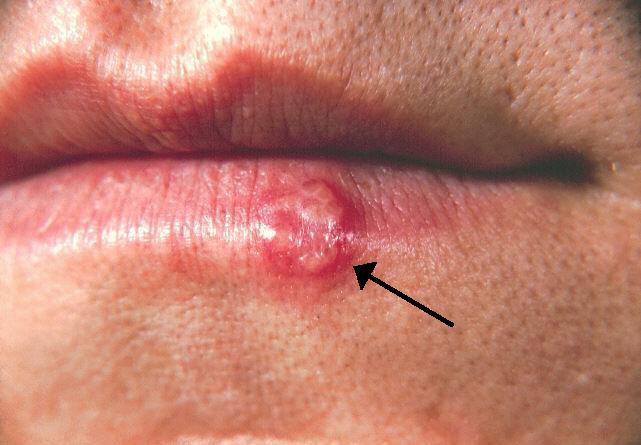
The herpes simplex virus can affect the genitals or the oral region and, though it is often symptomless, it can manifest via painful, white, fluid-filled sores. When these appear around or in the mouth, they are known as cold sores, and they can even appear on the tongue. Highly contagious, there is no cure for the herpes virus yet, but symptoms can go away with treatment.
Babies with a heart-shaped tongue may have ankyloglossia
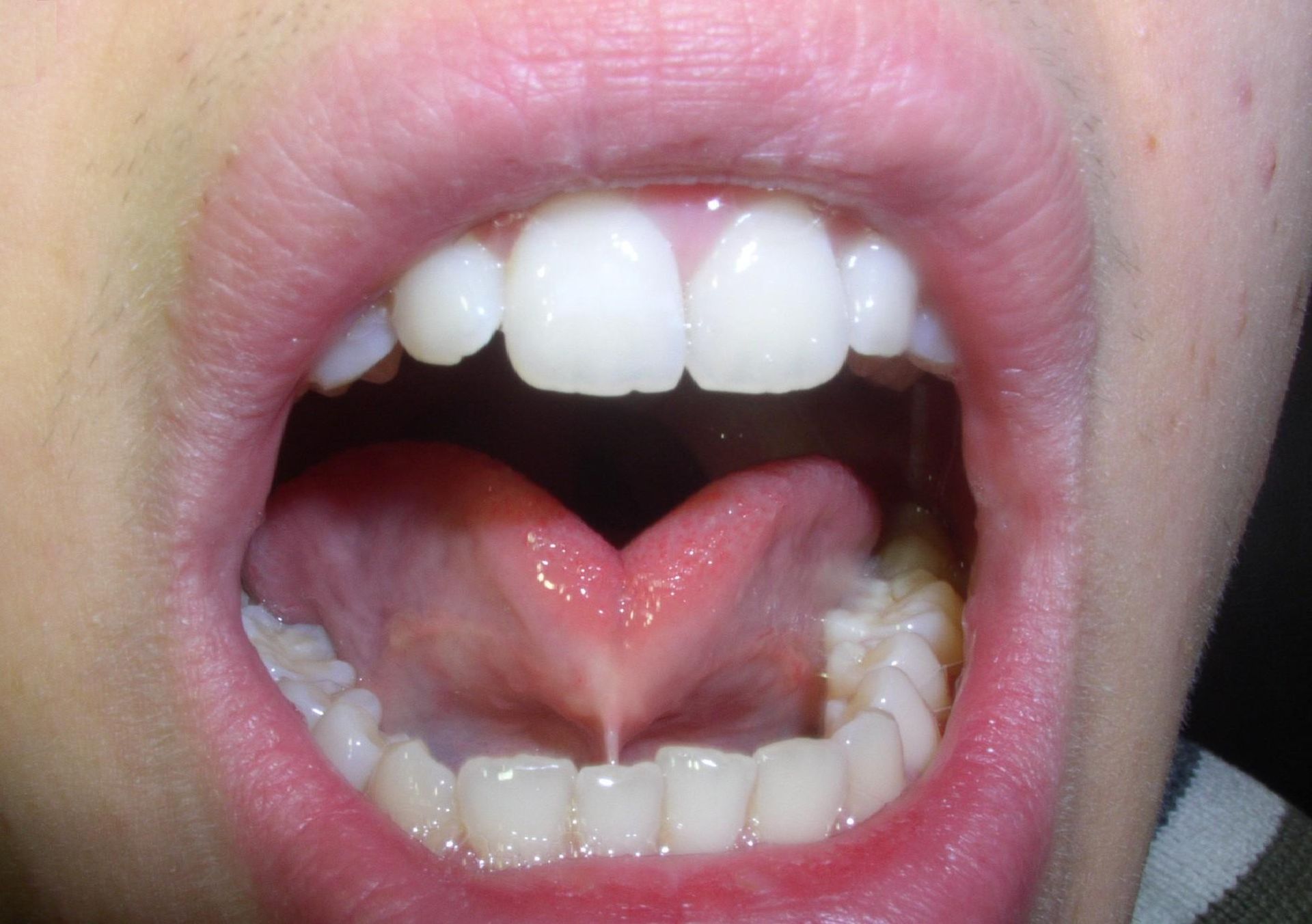
Some babies are born with a heart-shaped tongue, in a condition known as tongue-tie. This disorder occurs when the section of skin attaching the tongue to the base of the mouth is too short. It may not cause any problems, but in some cases, it can interfere with breastfeeding. It can be corrected with a simple medical procedure.
A hot-pink tongue signifies a serious burn

As with all burns, a burn on the tongue can either be classed as a first, second or third-degree. First and second-degree burns often turn hot pink and are often quite painful, with blisters sometimes forming after a while. Third-degree burns, in contrast, may turn the tongue white or black and are much rarer and more serious.
A smooth tongue is a sign of glossitis
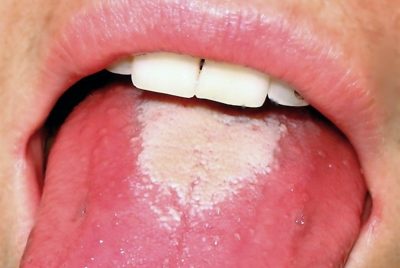
Any kind of tongue inflammation is called glossitis by doctors. In some cases, you may notice that your tongue feels very smooth, in addition to experiencing changes in colour and sensation. Inflammation of this kind can be triggered by injury, an allergic reaction, irritants like tobacco or various medical syndromes.
Geographic tongues are white and patchy
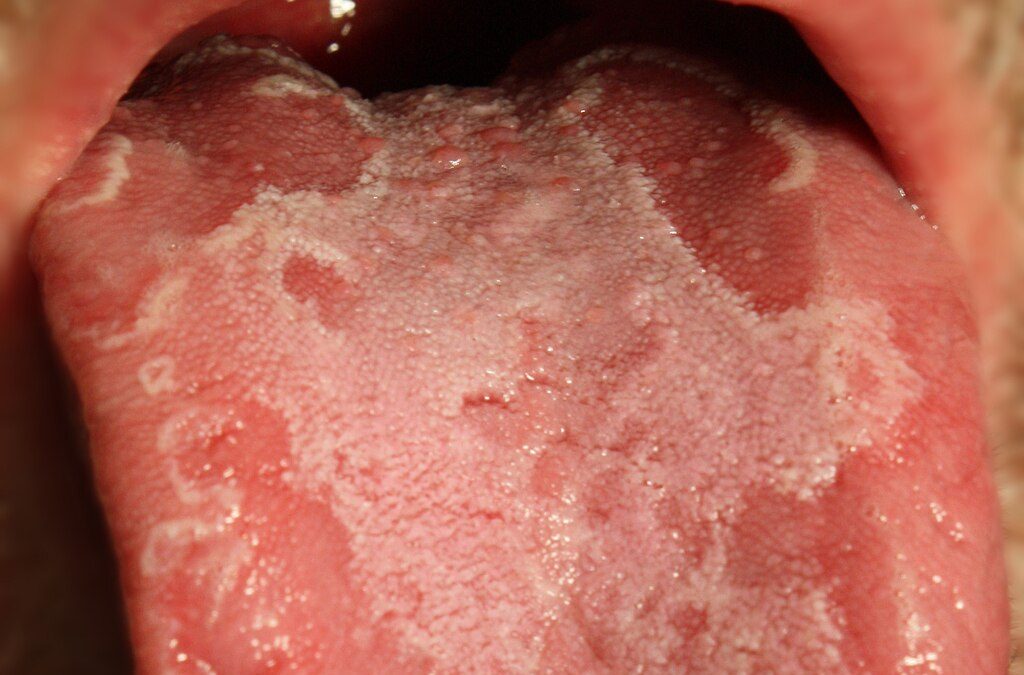
Geographic tongue is a type of glossitis. No one has yet discovered what causes these strange, white, map-like patterns to blossom over the tongue, but it’s thought that they might be linked to irritation from spicy food. Interestingly, this condition is less common in those who smoke. The shape and location of these patches can change from day to day.
A yellow discharge is a sign of thrush
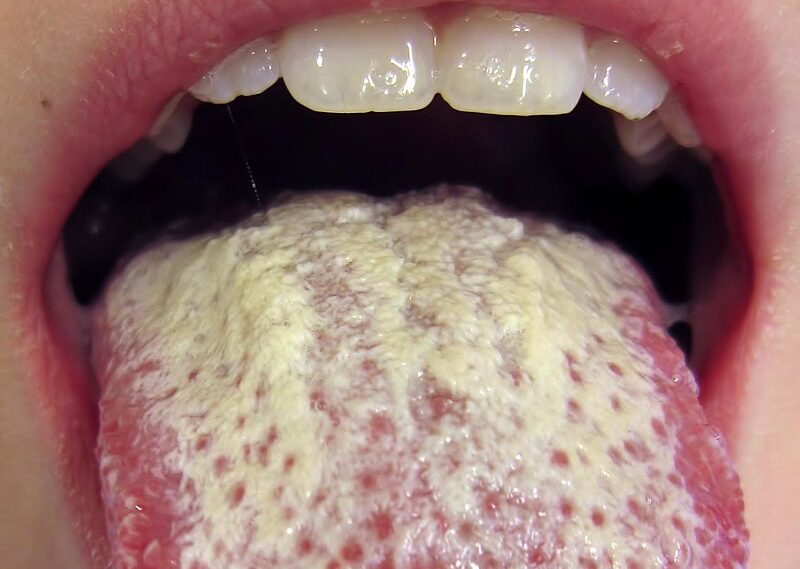
Like herpes, thrush is an infection that can occur in the genital region or in and around the mouth. However, thrush is caused not by a virus, but by a fungus called Candida. Oral thrush may cause a yellow discharge to collect on the surface of the tongue. Easy to treat, you can get an over-the-counter mouth gel for thrush, but if left untreated, it can spread to other parts of the body.
A blue tongue is commonly known as cyanosis
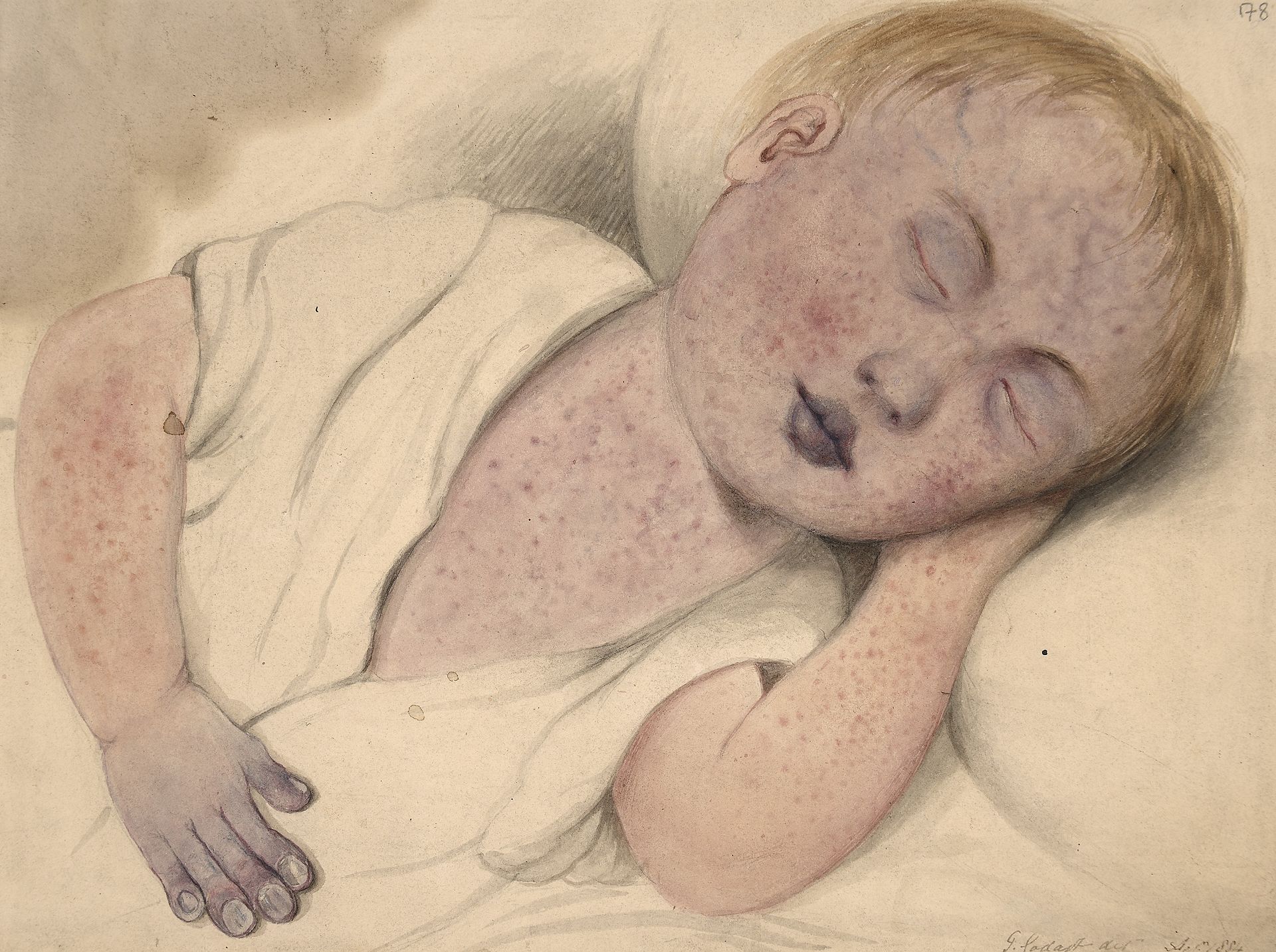
Cyanosis is a phenomenon where your skin, lips, tongue, gums and nail beds turn a different colour. The hue is usually a blue-grey colour and can be quite shocking to see. On people with darker skin, cyanosis may be more apparent on the palms of the hands. It’s a sign of low blood oxygen levels, which in turn can be a warning sign of a blood clot, pneumonia or heart failure.
Menopause can make your tongue burn

18-33% of women going through menopause experience burning mouth syndrome, an unpleasant sensation where the tongue and lips may feel tingly, hot or numb. This condition can also affect your sense of taste and cause your mouth to become very dry. There is no specific known cause or cure, but there are treatments available to relieve pain and reduce dryness.
A salty taste could be caused by oral bleeding

Bleeding within the mouth can be a hard-to-identify sensation, but before you even detect an injury or wound, you may taste salt. This is because blood contains a lot of dissolved sodium chloride. Bleeding in the mouth can be the result of gum disease, brushing your teeth too vigorously, or even injury from sharp-edged foods like crisps.
A painful, persistent lump needs a cancer check
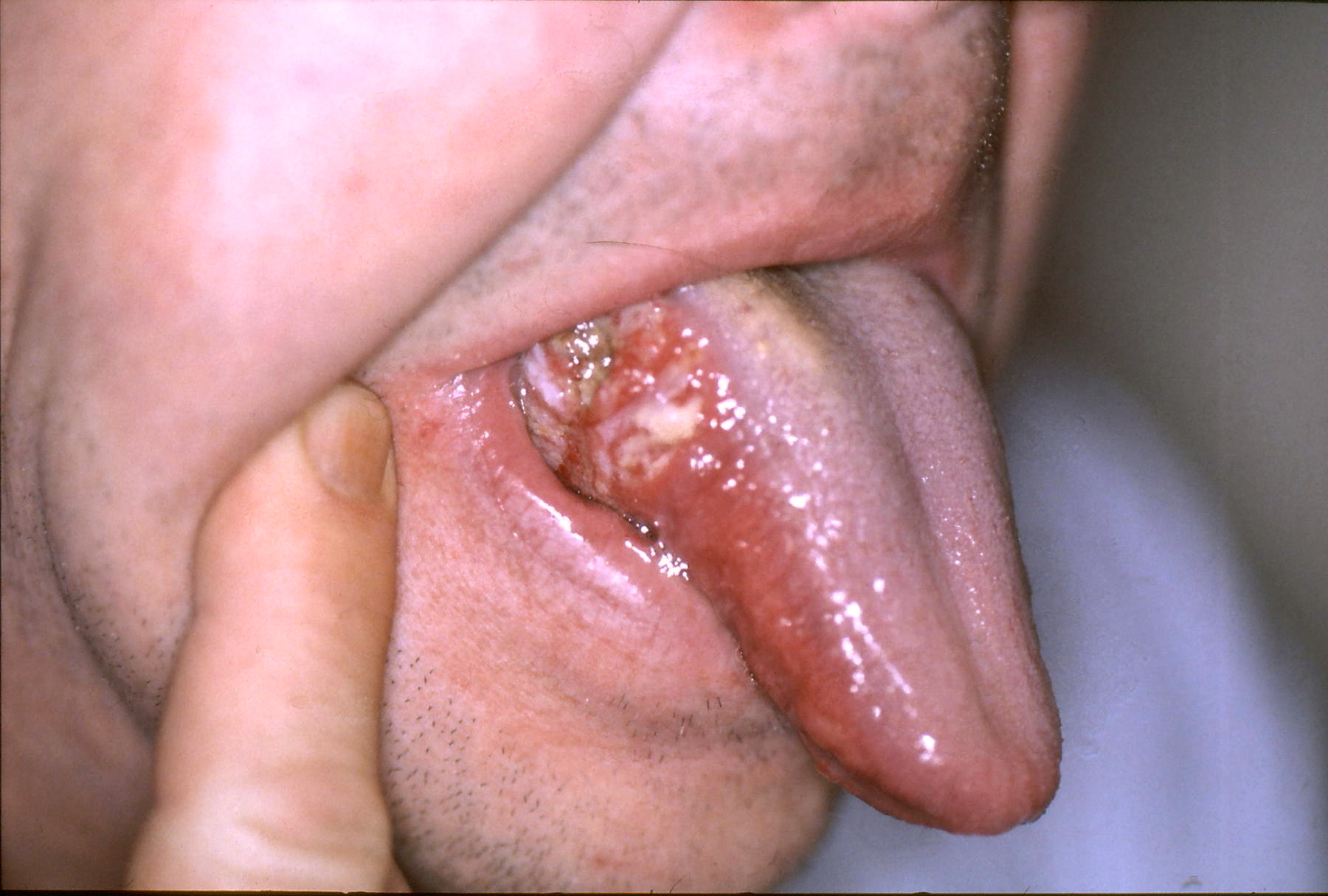
Tongue cancer can develop anywhere on your tongue, including the base. Common symptoms include a persistent red or white patch on your tongue, as well as a sore throat, numbness or a lump in your neck. Unexplained bleeding may also occur. Tongue cancer is rare, making up only about 1% of cancer diagnoses in the USA, but it’s important to check any of the above symptoms by visiting your doctor.
Heartburn can trigger a sour taste

Heartburn is the unpleasant sensation of burning that occurs when stomach acid moves up your digestive tract towards your throat. Persistent heartburn is known as gastro-oesophageal reflux disease. The stomach acid can leave a very strong sour taste on your tongue, which is often worse after eating.